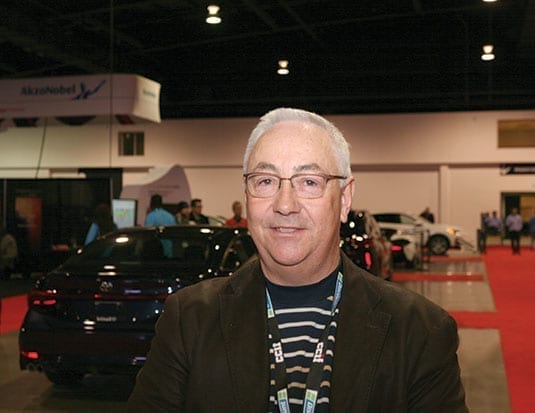Creating new ways to exchange information and ideas within the collision repair industry.
The collision repair industry in Saskatchewan, like elsewhere in the world, is currently grappling with the disruptive speed of change in vehicle complexity and safety systems.
Just “knowing” how to repair vehicles is not enough for technicians to survive today. Some of the key challenges faced by shops are learning how to access relevant repair procedures and the increasing need to purchase expensive equipment without receiving any extra returns on their investment.
Establishing channels
Tom Bissonnette, Executive Director at the Saskatchewan Association of Automotive Repairers (SAAR), considers it his responsibility to help the association’s members gain access to training and information. As such, he sees establishing a partnership with the Society of Collision Repair Specialists (SCRS) in the U.S. as a step in this direction.
“Our goal is to help each and every shop raise their knowledge level to make smart repair decisions and to help them make intelligent equipment purchase decisions,” he says.
In addition to accessing the content of the SCRS Repairer Driven Newsletter, SAAR now receives regular emails with relevant collision repair information ranging from OEM repair techniques to body shop management strategies from its new partner.
“Despite the statutory differences between the U.S. and Canada, such as consolidation and insurance programs, one of the biggest challenges facing the collision repair industry in both countries is the quickening pace of technology that we are working on. It is absolutely necessary that information get into the hands of repairers, so that they can make the necessary adaptations in their business to meet the increasing demands from technology,” says Aaron Schulenburg, Executive Director, SCRS.
Database Enhancement Gateway
The SCRS has resources and tools that address challenges faced in the marketplace today. For example, the Database Enhancement Gateway is a resource that helps address errors, inaccuracies and permissions within estimating systems. Schulenburg believes that access to such benefits is prompting Canadian organisations to forge partnerships with national associations in the U.S.
The SCRS understands the growing emphasis on adhering to stricter guidelines for auto repair procedures put in place by automakers. Keeping up with the SCRS mission of education, information and advocacy, it provides the collision repairer’s perspective when collaborating with automakers, certification networks and organizations like I-CAR to help them define requirements in meeting the needs of collision repairers.
Sharing knowledge
Both SAAR and SCRS aim to influence the industry and take it forward by establishing proper channels for exchanging information.
“We are working with Manitoba and British Columbia Auto Body organizations by sharing best practices and training information. We are winning together, and it would be great to connect with other provinces that have auto body associations to help them win as well,” says Bissonnette. Exchange of information between shops is the key to growth and success, according to him.
The SCRS encourages its affiliate network to keep up a constant flow of information from all sides. Involvement at the local as well as national level helps in establishing a well-connected industry with more opportunity to raise quality and awareness, and to speed up its reaction time.
“All of us (in the North American collision repair industry) are working towards the same end result—which is an industry that is lifted up by its associations, that is more aware, that is stronger through information and that is better prepared to meet the changing vehicles of tomorrow for the collision repair market,” says Schulenburg.



